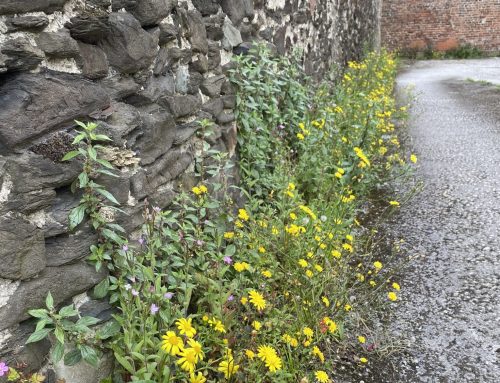by Dr Victoria Burton, Ecologist, Natural History Museum
It is widely recognised that human activities are driving global declines in biodiversity through land-use change, climate change, and pollution, including pesticide use. Soil biodiversity – comprising organisms like earthworms, insects, and mites – is crucial for maintaining healthy soils and is essential for human well-being. These organisms enhance soil resilience and play a vital role in mitigating climate change effects. A thriving soil ecosystem supports sustainable food production, which is increasingly important as environmental pressures grow. Soil organisms make up 59% of Earth’s species and are a key part of terrestrial food webs. However, soil life remains understudied, and it is unclear whether soil biodiversity faces the same threats as above-ground ecosystems.
To address this knowledge gap, we conducted a meta-analysis using data from 624 studies to compare 3,161 cases of soil fauna in impacted and unimpacted sites. Our analysis revealed that unlike above-ground biodiversity where land use and climate change are typically the greatest threats, pollution – including pesticides – had the most significant negative impact on soil communities. Among the pollution stressors examined, metal pollution had the strongest adverse effect, though pesticides were also notably harmful.

Pesticides are a threat to healthy soils.
Pesticides can enter the soil through various routes, such as spraying, seed coatings, leaching, and tillage, with some persisting for decades. However, their impact on soil organisms has been less studied compared to above-ground biodiversity, suggesting that the consequences could be more widespread than currently understood. Additionally, pollutants like microplastics and hydrocarbons were not included in our analysis due to limited data.
Not all of our findings were negative. We discovered that many organic-based additions, such as the use of manure or mulch, led to an increase in the abundance of soil fauna. There were also other unexpected results; we expected that the impact of global changes would vary depending on the ecosystem or the size of the organisms, but this was rarely the case.
Overall, our study found that threats to soil biodiversity often differ from those affecting above-ground species, highlighting the need to explicitly include soil fauna in future research. Protecting soil biodiversity is essential not only for ecosystem health but also for ensuring long-term food security. The identification of pesticide use as a major threat supports policies like the European Green Deal, which aims to reduce pesticide use in agriculture. This is crucial for conserving biodiversity and safeguarding future food production.
 Dr Victoria J. Burton is an ecologist at the Natural History Museum, London, researching the impact of human activity on biodiversity, with a focus on soil ecosystems and urban environments. She currently works on the National Education Nature Park project, commissioned by the Department for Education, where she supports and monitors efforts to enhance biodiversity at nurseries, schools, and colleges in England.
Dr Victoria J. Burton is an ecologist at the Natural History Museum, London, researching the impact of human activity on biodiversity, with a focus on soil ecosystems and urban environments. She currently works on the National Education Nature Park project, commissioned by the Department for Education, where she supports and monitors efforts to enhance biodiversity at nurseries, schools, and colleges in England.





